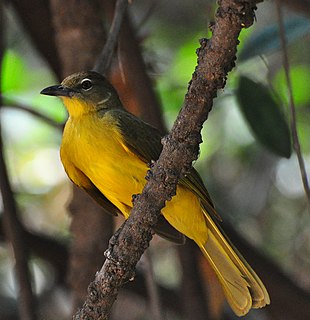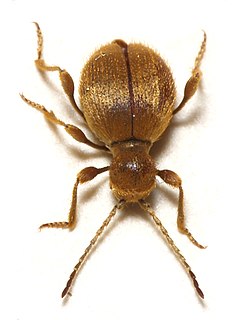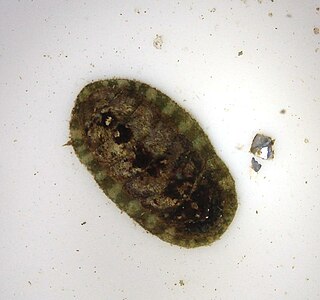Genus is a taxonomic rank used in the biological classification of living and fossil organisms as well as viruses, in biology. In the hierarchy of biological classification, genus comes above species and below family. In binomial nomenclature, the genus name forms the first part of the binomial species name for each species within the genus.

The skimmers or perchers and their relatives form the Libellulidae, the largest dragonfly family in the world. It is sometimes considered to contain the Corduliidae as the subfamily Corduliinae and the Macromiidae as the subfamily Macromiinae. Even if these are excluded, there still remains a family of over 1000 species. With nearly worldwide distribution, these are almost certainly the most often seen of all dragonflies.

Abutilon is a large genus of flowering plants in the mallow family, Malvaceae. It is distributed throughout the tropics and subtropics of the Americas, Africa, Asia, and Australia. General common names include Indian mallow and velvetleaf; ornamental varieties may be known as room maple, parlor maple, or flowering maple. The genus name is an 18th-century New Latin word that came from the Arabic ’abū-ṭīlūn, the name given by Avicenna to this or a similar genus.

In zoological nomenclature, a type species is the species name with which the name of a genus or subgenus is considered to be permanently taxonomically associated, i.e., the species that contains the biological type specimen(s). A similar concept is used for suprageneric groups and called a type genus.

Campanula is one of several genera of flowering plants in the family Campanulaceae with the common name bellflower. It takes both its common and its scientific name from its bell-shaped flowers—campanula is Latin for "little bell".

Cryptocercus is a genus of Dictyoptera and the sole member of its own family Cryptocercidae. Species are known as wood roaches or brown-hooded cockroaches. These roaches are subsocial, their young requiring considerable parental interaction. They also share wood-digesting gut bacteria types with wood-eating termites, and are therefore seen as evidence of a close genetic relationship, that termites are essentially evolved from social cockroaches.

Ophiacodon is an extinct genus of synapsids belonging to the family Ophiacodontidae that lived from the Late Carboniferous to the Early Permian in North America and Europe. The genus was named along with its type species O. mirus by paleontologist Othniel Charles Marsh in 1878 and currently includes five other species. As an ophiacodontid, Ophiacodon is one of the most basal synapsids and is close to the evolutionary line leading to mammals.

Ctenospondylus is an extinct genus of sphenacodontid basal Eupelycosauria.

Cicindela, commonly known as common tiger beetles are generally brightly colored and metallic beetles, often with some sort of patterning of ivory or cream-colored markings. They are most abundant and diverse in habitats very often near bodies of water with sandy or occasionally clay soils; they can be found along rivers, sea and lake shores, sand dunes, around dry lakebeds, on clay banks, or woodland paths.

The yellow-bellied greenbul is a species of songbird in the bulbul family, Pycnonotidae. It is found in eastern, southern and west-central Africa. Its natural habitats are subtropical or tropical dry forests, subtropical or tropical moist lowland forests, and dry savanna.

Spider beetles make up the subfamily Ptininae, in the family Ptinidae. There are approximately 70 genera and 600 species in the subfamily, with about 12 genera and 70 species in North America north of Mexico.
Epigomphus is a genus of dragonflies in the family Gomphidae. They are commonly known as Knobtails.

Lestes is a genus of damselfly in the family Lestidae. The family hold their wings at about 45 degrees to the body when resting. This distinguishes them from most other species of damselflies which hold the wings along, and parallel to, the body when at rest.

Progomphus is a genus of medium-sized dragonflies in the family Gomphidae. They are found in the Americas and are largely tropical. They are one of the few Gomphids with coloured wings.

Notoplax is a genus of chitons in the family Acanthochitonidae.

Picobirnavirus is a genus of double-stranded RNA viruses. It is the only genus the family Picobirnaviridae. Although amniotes, especially mammals, were thought to serve as hosts, it has been recently suggested that these viruses might infect bacteria and possibly some other invertebrates. There are currently three species in this genus including the type species human picobirnavirus. Associated symptoms include gastroenteritis in animals and humans, though the disease association is unclear.

Aphylla is a widespread Neotropical genus of dragonflies of the Gomphidae family. They are commonly known as the greater forceptails because of their forceps-like cerci.

Chaetopleura is a genus of chitons in the family Chaetopleuridae. The species within this genus are marine molluscs.

Hanleya is a genus of polyplacophoran molluscs known from Oligocene and Miocene fossils; it is represented today by a number of species including H. sinica Xu 1990 (China), H. brachyplax (Brazil) and H. hanleyi Bean in Thorpe, 1844 (Chile), which feeds on sponges.

Lepidochitona is a genus of chitons. It has been included in the families Tonicellidae, Ischnochitonidae, and Lepidochitonidae.

















